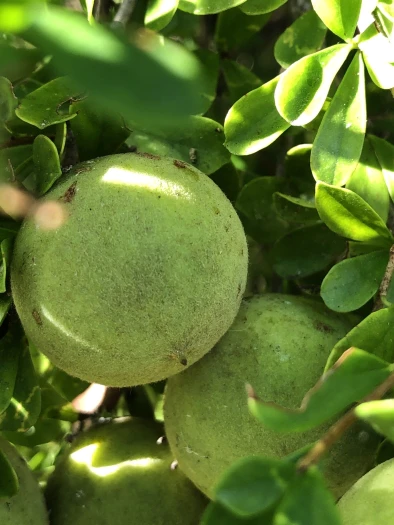Wallaby Apple
(Pittosporum spinescens)
Wallaby Apple (Pittosporum spinescens)
/
/

elawrey
CC BY 4.0
Image By:
elawrey
Recorded By:
Copyright:
CC BY 4.0
Copyright Notice:
Photo by: elawrey | License Type: CC BY 4.0 | License URL: http://creativecommons.org/licenses/by/4.0/ | Rights Holder: elawrey | Publisher: iNaturalist | Date Created: 2021-04-15T06:20:20Z |














Estimated Native Range
Climate Requirements for Milford City, Connecticut
| This Plant | Your Site | Plant Suitability for Your Location | ||
|---|---|---|---|---|
| • Precipitation | 17" - 104" | 46" | Aquatic | Aquatic |
| • High Temp. | 70°F - 104°F | 84°F | Your summer temperatures are normal for this plant. | Excellent |
| • Low Temp. | 32°F - 72°F | 21°F | Your winter temperatures may be too cold for this plant | Too cold |
This plant may not grow well at your location - your precipitation is too high.
Summary
Pittosporum spinescens, commonly known as Wallaby Apple, is an evergreen shrub endemic to the rocky slopes and dry forests of Australia. It typically grows to a height of 4-6 feet (1.2-1.8 meters) and a width of 3-4 feet (0.9-1.2 meters). The plant features a dense, rounded form with small, glossy green leaves. During spring, it produces small, fragrant white flowers that are somewhat inconspicuous against the foliage. The flowers are followed by yellow-orange berries that are attractive to birds and other wildlife.
Wallaby Apple is valued for its drought tolerance and ability to thrive in poor soils, making it a suitable choice for low-maintenance landscapes and xeriscaping. It is often used for hedging, screening, or as a specimen plant in residential gardens. This shrub prefers well-drained soils and can tolerate a range of light conditions from full sun to part shade. While it is generally pest-resistant, it can occasionally suffer from scale insects or sooty mold. Gardeners should be aware that the plant’s seeds are toxic if ingested.CC BY-SA 4.0
Wallaby Apple is valued for its drought tolerance and ability to thrive in poor soils, making it a suitable choice for low-maintenance landscapes and xeriscaping. It is often used for hedging, screening, or as a specimen plant in residential gardens. This shrub prefers well-drained soils and can tolerate a range of light conditions from full sun to part shade. While it is generally pest-resistant, it can occasionally suffer from scale insects or sooty mold. Gardeners should be aware that the plant’s seeds are toxic if ingested.CC BY-SA 4.0
Plant Description
- Plant Type: Shrub
- Height: 4-6 feet
- Width: 3-4 feet
- Growth Rate: Moderate
- Flower Color: White
- Flowering Season: Spring
- Leaf Retention: Evergreen
Growth Requirements
- Sun: Part Shade, Full Sun
- Water: Medium
- Drainage: Medium, Fast
Common Uses
Bee Garden, Fragrant, Low Maintenance
Natural Habitat
Endemic to the rocky slopes and dry forests of Australia
Other Names
Common Names: Orange Thorn
Scientific Names: Pittosporum spinescens, Citriobatus spinescens, Citriobatus javanicus, Citriobatus megacarpus, Citriobatus pauciflora, Ixiosporum spinescens
GBIF Accepted Name: Pittosporum spinescens (F.Muell.) L.W.Cayzer, Crisp & I.Telford